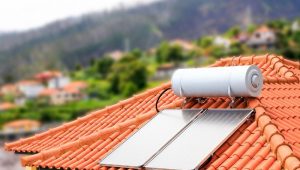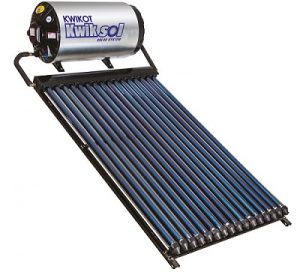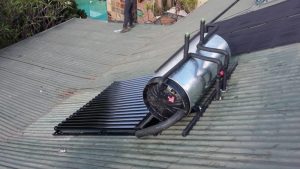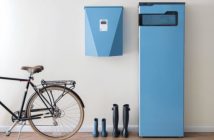If you’re considering going the eco-friendly route and installing a solar geyser at your home, there are a few things to consider before making the purchase. Solar power is widely used overseas and is also an ideal power source in South Africa. Of course, you may not know where to start when buying and installing a solar geyser in South Africa. This easy-to-use buyer’s guide will help highlight the factors you should consider before buying a solar geyser.
Hot water geysers can account for almost half of the electricity that we use in our homes. If we want to live a more sustainable lifestyle and save in the long run, then options like a solar geyser can go a long way to reduce our energy consumption. It’s essential that you consider geography, the number of people living in your home, and of course your budget before investing in a solar geyser.

Buying and installing a solar geyser may seem costly, but if you buy the right one for your needs, then it could help you save money on electricity in the long run. Of course, a solar water heater isn’t always the best option. It has its advantages and disadvantages. So do consider the following factors before you choose to buy one:
Indirect or direct system
Consider whether you need a direct or indirect system before installing a solar geyser.
A direct system: these type of solar geysers are best for frost-free areas, allowing for the water to be heated directly.
An indirect system: these types of solar geysers are best suited for homes that are situated in areas that experience frost. Indirect systems allow for the water to be heated through a heat exchange mechanism.

Find the best prices on solar geysers and other load-shedding solutions on PriceCheck now. You could save up to 40% on solar geysers and inverters:
Climate
Climate is another important factor to consider when buying a solar geyser. South Africa is fortunate to experience an abundance of sunshine across the country. This means that the aperture areas of the solar absorbers (solar collector panels and evacuated tubes) do not have to differ by area.
However, what is important to ensure is that the current size aperture is used with the correct size solar geyser. For example, according to Kwikot, a 150t solar geyser would use one 2m² solar collector panel or 12 evacuated vacuum tubes. In areas that experience extreme hot weather (anything over 30°C regularly), the water in the solar geyser can reach boiling point. To alleviate this, a thermostatic mixing valve must be included in the solar installation, to allow for cold water to enter into the system when the water reaches a certain temperature.

Tank size
Before buying a solar geyser, you will also have to consider the tank size you need. This will be determined by the number of people living in your home. Allocate 50 litres of warm water per person. In addition, budget an extra 50 litres of warm water for general domestic usage. With these calculations in mind, you’ll be able to estimate the tank size best suited for your home.
A general rule of thumb is if your current traditional electric geyser is for instance a 150lt, then the solar geyser should be a 200lt.
Split or Close Coupled System
You will also need to consider whether you want to use a Split Pumped System or Close Coupled Thermosyphon System with your solar geyser.
A Split Pumped System involves placing the solar geyser at a lower level and away from the solar absorbers, such as in the ceiling or at floor level, whereby a pump is used to circulate the water between the solar geyser and the solar absorbers.

A Close Coupled Thermosyphon System involves placing the solar tanks outside on the roof and above the solar absorbers and the entire system is joined. Using this system, the natural laws of physics apply, whereby the hot water rises and automatically circulates between the solar geyser and solar absorber.
With a Closed Coupled System, the fact that the collector and storage tank in the solar geyser system are close together means that there is less heat loss in the pipe work connecting the two. Installation is reasonably straightforward, and it is more likely to be installed correctly. If you have a leak or burst geyser then it should not result in water running through the ceiling and the system will still operate during power outages as no circulation pump is needed.
However, there are some disadvantages to this type of system. The wide, low solar geyser storage tank has poor stratification and heat is conducted down from the hot water to the cold water beneath it. Your roof also has to be strong enough to support the weight of the water in the solar geyser storage tank. Some people find the solar geyser tank on the roof aesthetically unattractive.
Cost
Solar geysers come in a wide range of sizes at different prices. But they are generally more expensive when compared to ordinary electric geysers. While a solar geyser may help you save money on electricity in the long run, its initial cost is high. If you are planning to stay at your place of residence for a long time then a solar geyser is a great idea. If, however, you move often, then it may not be the most cost-effective solution for you.
Find the best prices on solar geysers and other load-shedding solutions on PriceCheck now. You could save up to 40% on solar geysers and inverters:




